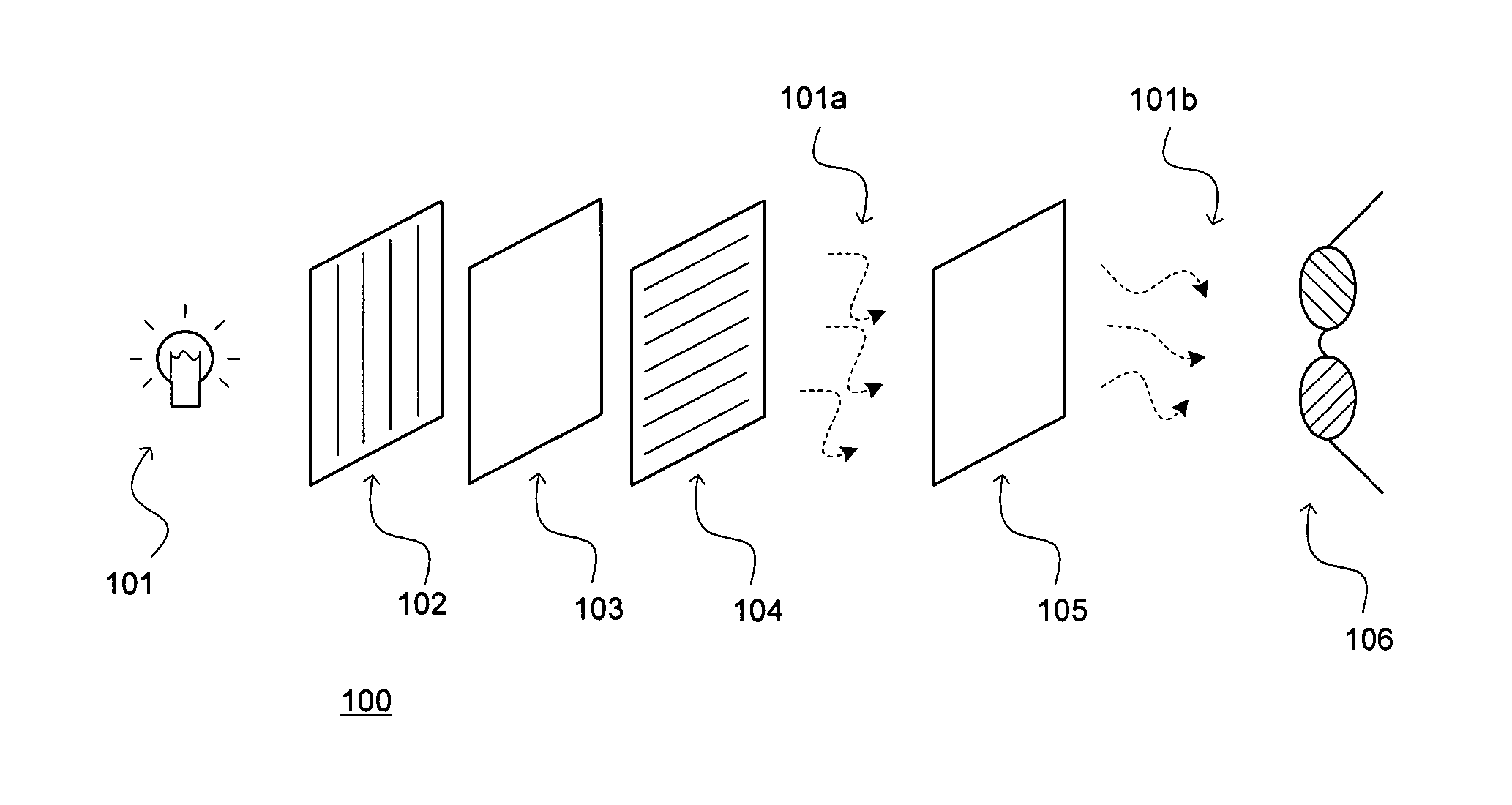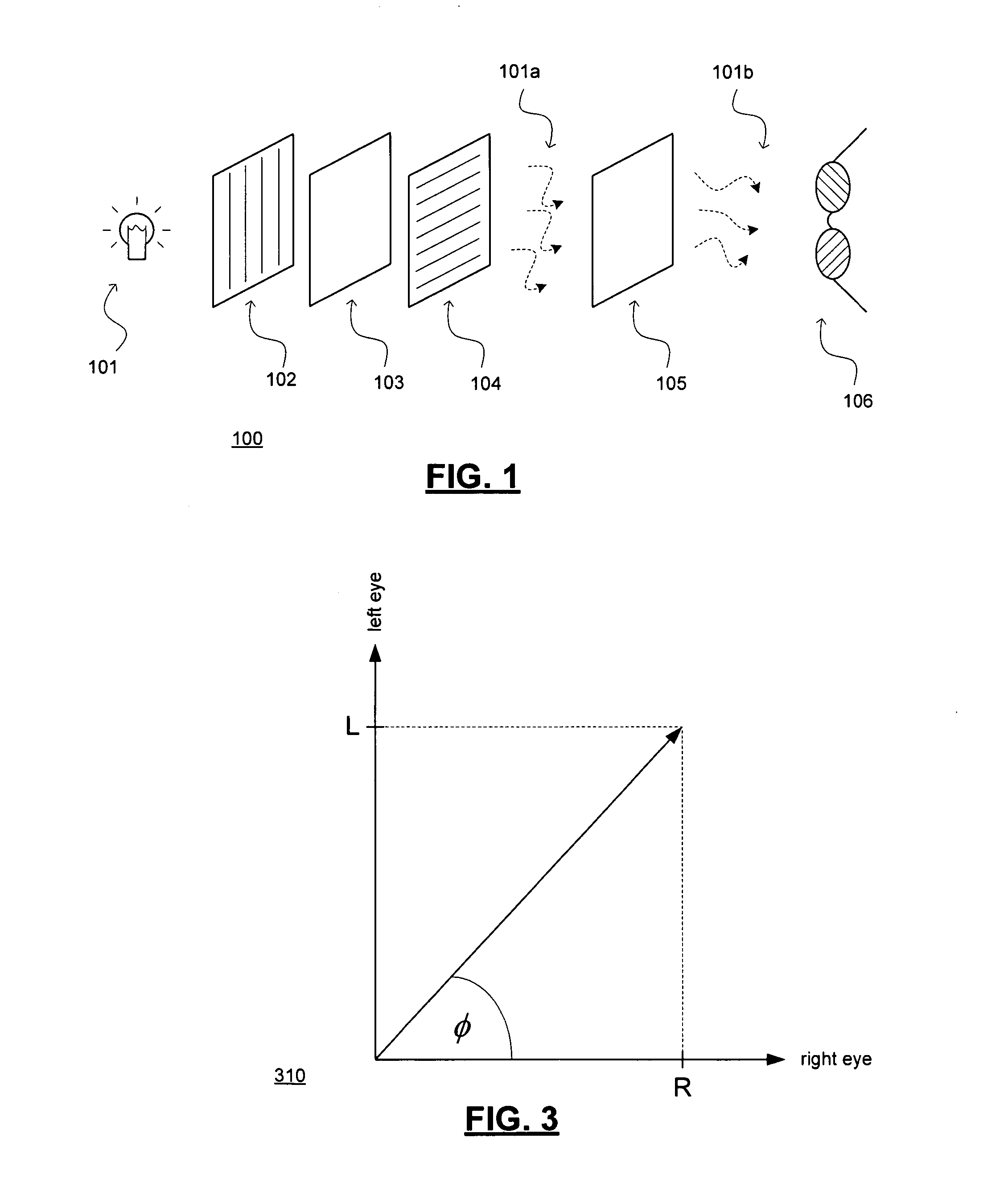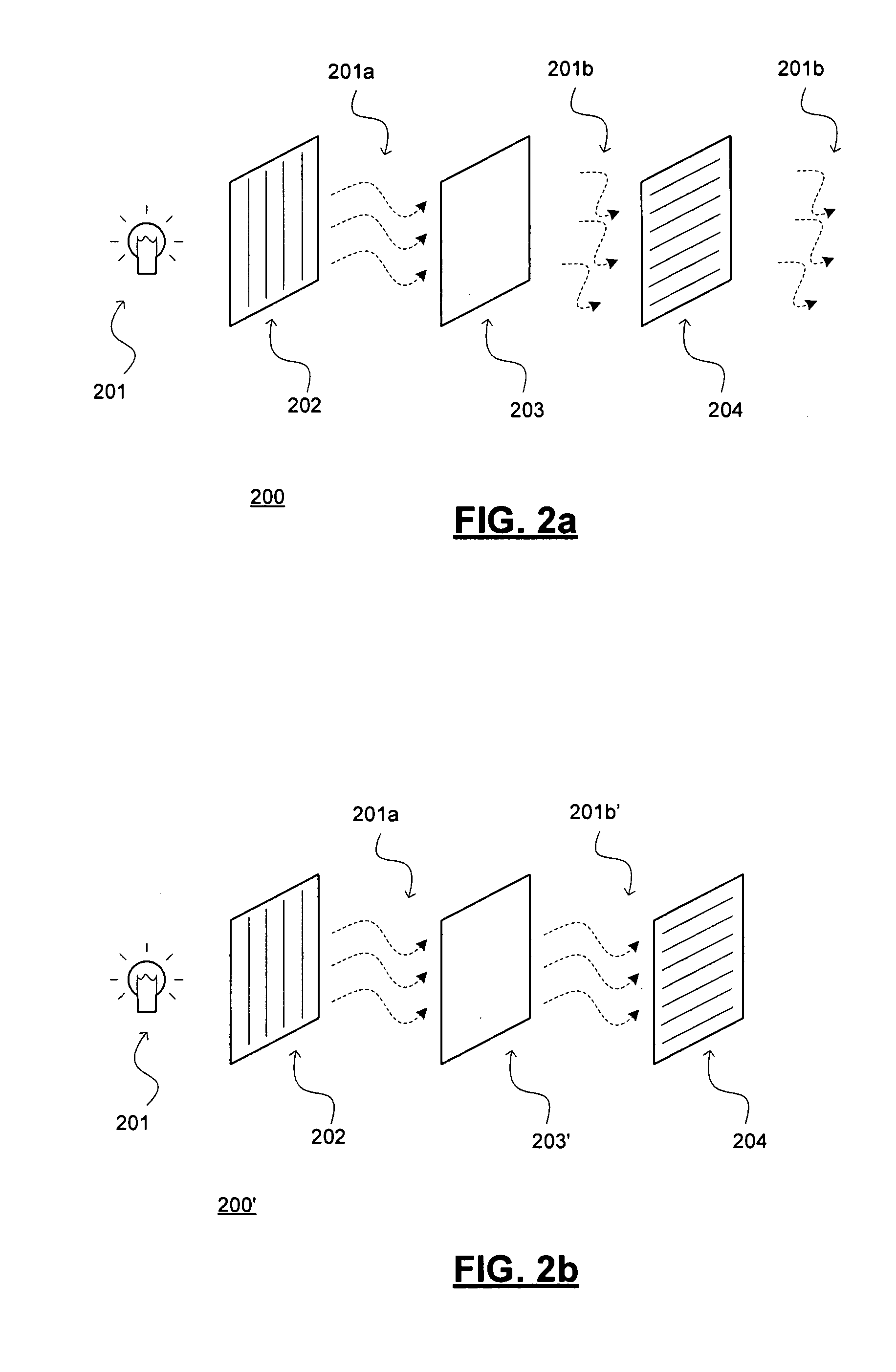Two-panel liquid crystal system with circular polarization and polarizer glasses suitable for three dimensional imaging
- Summary
- Abstract
- Description
- Claims
- Application Information
AI Technical Summary
Benefits of technology
Problems solved by technology
Method used
Image
Examples
Embodiment Construction
[0026] Referring to the drawings and first to FIG. 1, one or more embodiments of the invention relate to the combination of a first polarizer 102 (or “back polarizer”), a back LC panel 103, a second polarizer 104 (or “front polarizer”), a front LC panel 105 and polarizing glasses 106. These elements, as depicted, are arranged in a stacked configuration. The first polarizer 102 is situated immediately in front of a suitable light source 101 such that light will be transmitted through the first polarizer 102, then through the back LC panel 103 (where its polarization can be changed as described below), then through the second polarizer 104. As will be readily appreciated by one skilled in the art, the polarization rotation imparted by the individual pixels of the back LC panel 103 cooperate with the second polarizer 104 to produce polarized light 101a having an intensity profile representative of an image that depends upon how the individual pixels of back LC panel 103 are controlled....
PUM
 Login to View More
Login to View More Abstract
Description
Claims
Application Information
 Login to View More
Login to View More - R&D
- Intellectual Property
- Life Sciences
- Materials
- Tech Scout
- Unparalleled Data Quality
- Higher Quality Content
- 60% Fewer Hallucinations
Browse by: Latest US Patents, China's latest patents, Technical Efficacy Thesaurus, Application Domain, Technology Topic, Popular Technical Reports.
© 2025 PatSnap. All rights reserved.Legal|Privacy policy|Modern Slavery Act Transparency Statement|Sitemap|About US| Contact US: help@patsnap.com



